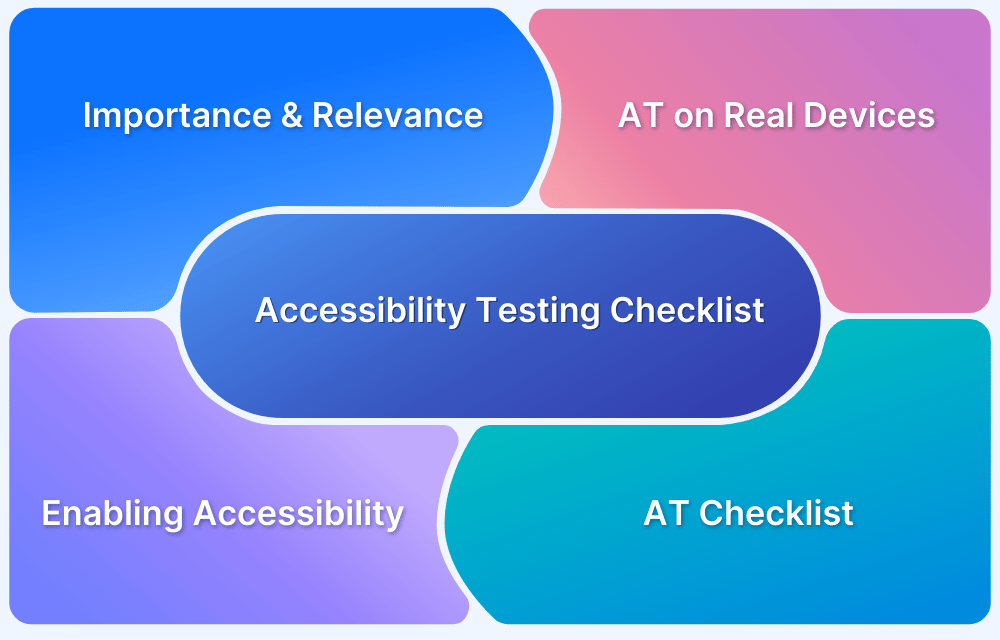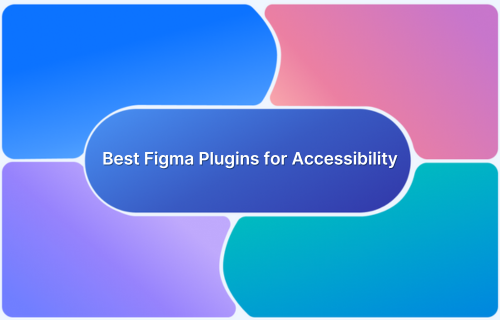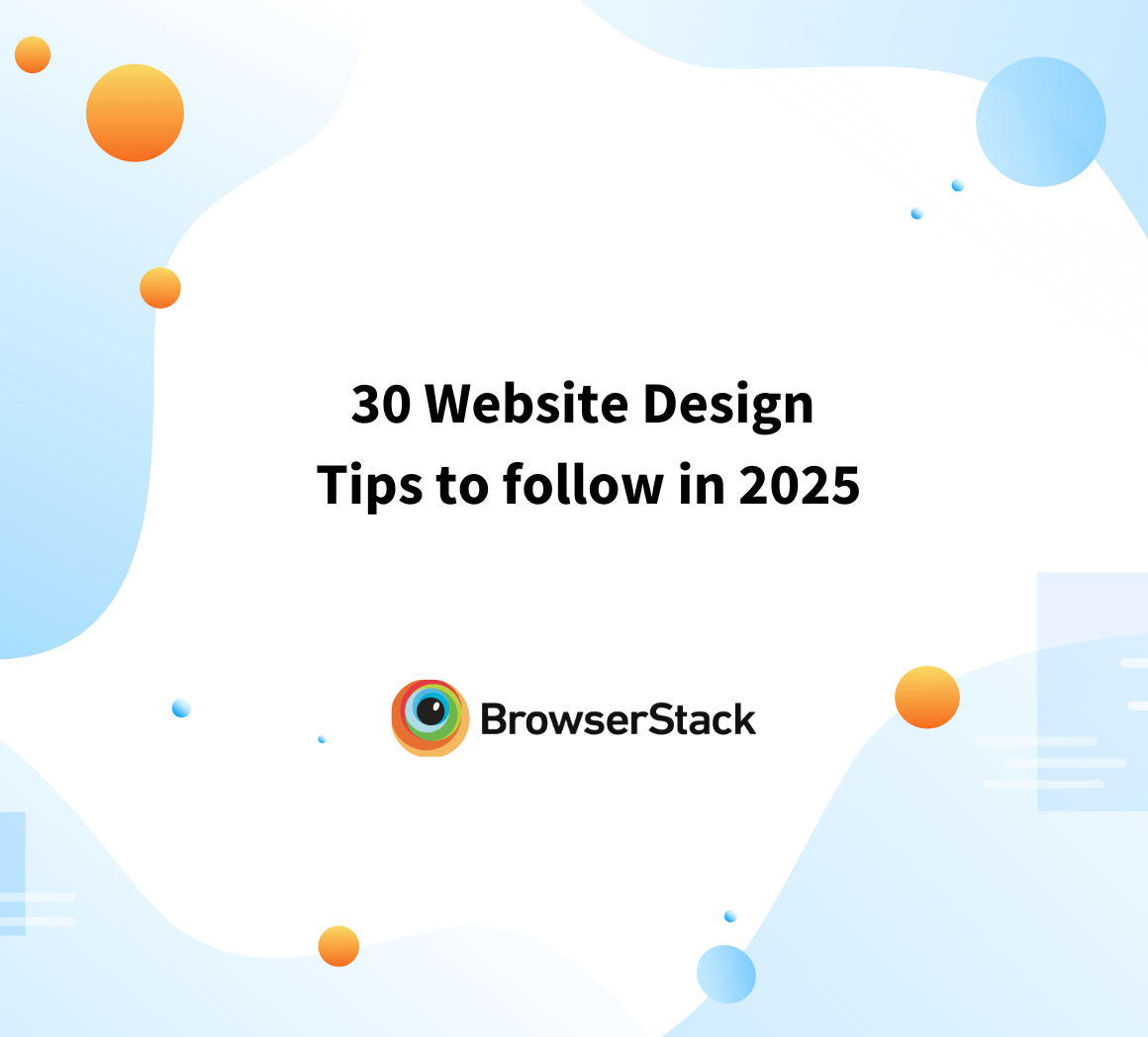When designing websites, visual aspects such as fonts, colors, layouts and animations are often focused. However, web accessibility is something even more important that is often overlooked.
Overview
Why is Accessibility important in Web Design?
Accessibility is important in web design because it ensures everyone, including people with disabilities, can access, navigate, and interact with digital content.
It improves user usability, expands audience reach, supports legal compliance, and reflects a commitment to inclusive, user-centered design.
How to make your Website Design Accessible
- Support screen readers with proper HTML and alt text.
- Allow text resizing and ensure high color contrast.
- Don’t rely on color alone. Use patterns or labels.
- Add captions and transcripts for audio/video.
- Offer multiple ways to contact, not just phone.
- Enable full keyboard navigation and large clickable areas.
- Use form autocomplete to ease input.
- Choose clear fonts and keep layouts consistent.
- Minimize distractions; highlight key information.
- Use simple language and structured navigation.
- Avoid flashing content to prevent seizures.
- Keep navigation menus consistent across pages.
When website is accessible, you’re making sure that users who rely on screen readers, keyboard navigation, voice commands, or other assistive tools can fully experience your content.
What is Accessible Web Design?
Accessible web design means creating websites and digital content that everyone can use, understand and interact with, including people with disabilities. It ensures that no one is left out of getting information or using services on the internet, no matter what their physical or mental abilities.
Disabilities can be of many types. Some can be seen, and some cannot. A person may be blind, have low vision, be deaf or hard of hearing, have difficulty moving, face learning or memory challenges, or even have temporary issues like a broken hand or being in a noisy place.
Accessible web design keeps all these situations in mind and tries to create websites that are easy, flexible, and comfortable for everyone to use.
It also aligns with the Web Content Accessibility Guidelines (WCAG), which provide a global standard for building accessible digital experiences.
Accessible web design involves:
- Ensuring that text is readable for users with visual impairments. For example, high contrast and resizable fonts.
- Making sure the site can be fully navigated using just a keyboard.
- Providing alt text for images so screen readers can describe them.
- Including captions or transcripts for videos.
Read More: Top 15 Examples of Accessibility Websites
Why is Accessibility important in Web Design?
Web accessibility is important because it offers significant benefits like:
1. Enhanced User Experience: Accessible design improves the overall user experience. Features such as clear navigation, readable fonts and alternative text for images make websites more user-friendly for all visitors, not just those with disabilities.
2. Expanded Market Reach: By implementing accessibility features, businesses can tap into broader audience. An accessible website can lead to increased visitor numbers and customer loyalty.
3. Legal and Social Responsibility: Many countries have legal requirements for web accessibility. Non-compliance can result in legal consequences and damage to the company’s reputation.
Beyond legal consequences, providing an accessible website demonstrates corporate social responsibility and commitment to inclusivity as well.
4. Innovation and SEO Benefits: Accessible design often leads to innovative solutions that benefit all users.
Also, accessible websites tend to have cleaner code and better structure, which can enhance search engine optimization (SEO) and improve search rankings.
Here are some stats that highlight the importance of web accessibility:
- According to WHO, approximately 15% of the world’s population or over 1 billion individuals, experience some form of disability
- A 2025 analysis of the top one million websites revealed that 94.8% had detectable Web Content Accessibility Guidelines (WCAG) 2 failures.
- Common accessibility issues include low-contrast text found on 79.1% of home pages, missing alternative text for images on 55.5% of home pages, and missing form input labels on 48.2% of home pages.
- In 2024, more than 4,000 lawsuits related to web accessibility were filed in the United States.
Principles of Accessible Web Design
Web Content Accessibility Guidelines (WCAG) are based on four foundational principles, known by the acronym POUR:
- Perceivable: This means content on the website should be easy to see, hear or even feel, so that everyone can access and understand what’s being shared.
- Operable: This means all buttons, links and other interactive parts on website should work with different input methods like a keyboard, mouse or assistive tools.
- Understandable: This involves designing content that is clear and concise, and ensuring that the website behaves in predictable ways.
- Robust: This means the content should work well with different devices and assistive technologies. Even though technology changes, the website should still be easy to access and use for everyone.
Read More : Quick Website Accessibility Testing Checklist
How to make your Website Design Accessible?
Some people might have trouble seeing, hearing, moving, understanding information, or staying focused. They often face challenges when using websites. But with a few thoughtful design choices, we can make the web much easier for them to navigate and use. Here’s how:
Designing for Visual Impairments
1. Blindness
- Screen Reader Compatibility: This includes ensuring the website works well with screen readers using proper HTML tags and providing descriptive alt text for images. This allows users who are blind to understand and navigate your content effectively.
2. Low Vision
- Adjustable Text Sizes: Enables users to resize text without breaking site’s layout. Using percentages for fonts can help maintain design integrity.
- High Contrast: This includes using colour combinations that gives strong contrast between text and background to enhance readability for users with low vision.
3. Color Blindness
- Not Relying Solely on Color: This includes ensuring that colour isn’t the only method used to convey information. Comb
Read More: Accessibility Color Contrast Testing
Designing for Hearing Impairments
1. Deafness and Hard of Hearing
- Provide Text Alternatives for Audio Content: This includes offering transcripts for podcasts and captions for videos so users who are deaf or hard of hearing can access the information.
- Multiple Contact Options: This means including various ways for users to reach out, such as email or live chat, not just phone numbers. This ensures that those who cannot hear well have alternative communication methods.
Designing for Mobility Impairments
1. Limited Hand Movement and Muscle Fatigue
- Accessible Keyboard Navigation: This includes designing websites where functionalities are accessible via keyboard shortcuts, which helps users who cannot use mouse.
- Clickable Areas: Making buttons and links large enough to be easily clicked. This reduces the precision needed for users with limited dexterity.
2. Use of Assistive Devices
- Form Autocompletion: Implementing autocomplete features in forms to minimize the amount of typing required. This assists users who rely on assistive devices.
Read More: Top 15 Accessibility Automation Tools
Designing for Cognitive and Neurological Divergence
1. Dyslexia
- Accessible Fonts: This means using clear, sans-serif fonts and avoiding italic text to enhance readability for users with dyslexia.
- Consistent Layouts: This means maintaining a predictable and consistent layout across all pages to help users navigate the site more easily.
2. ADHD
- Minimize Distractions: This includes limiting the use of auto-playing media and excessive animations that can divert attention.
- Highlight Important Information: This means using headings and bullet points to break down information, making it easier to process.
3. Autism
- Clear and Simple Language: This includes avoiding figures of speech and ambiguous language to ensure content is straightforward and easily understood.
- Structured Navigation: This includes providing clear paths and options. This reduces the cognitive load required to navigate your site.
4. Epilepsy
- Avoid Flashing Content: This means refraining from using content that flashes or flickers, as it can trigger seizures in individuals with photosensitive epilepsy.
5. Memory Challenges
- Consistent Navigation: This includes keeping navigation menus in the same location on every page to help users with memory impairments find information easily.
Challenges in implementing Web Design Accessibility
Implementing web accessibility is important for creating inclusive digital experiences. But organizations often face several challenges in this process:
1. Complexity of Accessibility Standards: The Web Content Accessibility Guidelines (WCAG) are meant to help make websites accessible to everyone, including people with disabilities. But the way they’re written can be very technical and hard to understand.
This can make it difficult for developers and designers to know exactly what to do, which might lead to websites not fully meeting accessibility standards.
2. Integration into Existing Workflows: Adding accessibility features to existing design and development processes can be challenging.
Teams who are used to their usual way of working might not want to change and may see accessibility as a problem instead of an improvement.
3. Rapid Technological Advancements: Web technology changes quickly, so teams need to keep learning to make sure their websites stay accessible.
This means regularly keeping up with new tools, frameworks and best practices, which takes time and effort.
4. Common Design Oversights: Some design issues can make websites hard to use for people with disabilities. These include low contrast between text and background, missing alt text for images, and unclear form labels.
Read More: Text Alternative Testing
Such problems can make it difficult for screen readers and visually impaired users to access content.
5. Legal and Compliance Risks: Not following accessibility rules can lead to legal trouble, like lawsuits or fines. It’s important to follow laws like the Americans with Disabilities Act (ADA) to avoid these risks.
How does BrowserStack help in testing the Accessibility of Web Design?
BrowserStack Accessibility Design Toolkit is a Figma plugin designed to help developers and testers identify, report and monitor accessibility issues efficiently.
Here are the key features of BrowserStack Accessibility Design Toolkit:
- Automated Accessibility Checks: Detect issues such as color contrast problems, missing alt text, improper heading structures, and touch-target violations directly within Figma design files.
- Component-Level Validation: Ensure that UI components meet accessibility standards across various states and interactions, promoting reusability and consistency.
- Intelligent Sequencing Suggestions: Receive recommendations to enhance keyboard navigation and focus order, improving usability for all users.
- Developer Handoff with Accessibility Annotations: Generate annotated design files that include specifications like alt text, ARIA labels, and focus order, facilitating accurate and efficient implementation by developers.
- Integration with Design Tools: Integrate with popular design platforms, allowing teams to incorporate accessibility checks without disrupting existing workflows.
Conclusion
Making websites accessible is important to ensure everyone, including people with disabilities, can use them easily.
Following accessibility guidelines helps organizations meet legal and ethical standards, improve user experience, reach more people, and build a stronger brand.
Although there can be challenges, tools like BrowserStack’s Accessibility Design Toolkit make the process easier. Focusing on accessibility is a smart move that supports fairness, encourages new ideas, and keeps the website up to date with the changing world.






